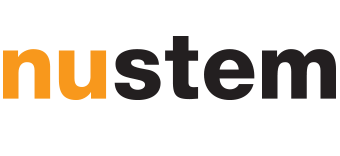Case Study: Joshua Macabuag
“You are always learning and you are always challenging your levels of knowledge … engineering is so intertwined with the people that you are working with and the communities that you are working with …”
Discovering engineering
When Joshua was growing up he always had a desire to be useful, to help others. He enjoyed maths and physics and was the first one on his family to go past their GCSEs. Like many young people he was not sure what step to take next but he decided to try university.
“I was felling my own way, coming from a generation where we could go from GCSE to A-Levels to University, that was a bit of an experiment. I really enjoyed university!”
He doesn’t recall having many role models when growing up except his father who was a car mechanics. The practical approach and working on physical projects which naturally happens in car mechanics quickly became engrained on him.
According to Joshua, one of the key drivers of engineering is that final physical output:
“That is a real life impact that is what kept me in engineering, engineering for me is having a real world impact”
He also volunteered for a year in rural South Africa. That year was an eye-opener for him as he saw how engineering is crucial to improve the lives of many people by building roads, buildings and other infrastructures.
Disaster risk Engineering
Joshua is a disaster risk engineer, meaning that he uses mathematical models to try to predict how often natural disasters such as hurricanes or tsunamis can occur and how likely these natural phenomena are to damage buildings and affect local populations.
It about making informed decisions in case of uncertainty: you can’t get information about every single building a city so you have to make assumptions and make decisions based on those assumptions.
The damage that earthquakes and hurricanes do to buildings is very different as Joshua explains:
During an earthquake, as the ground shakes, the building also wants to shake due to its inertia. And the movement of the building and its own weight is what causes the force that then breaks the structure and collapses.
A hurricane is very different. It has very strong winds so you have an external force applying to your building and that force will try to lift up the roof, for example. As the wind passes through your structure it causes an uplift force. The air can get quickly trapped inside of the building which creates a pressurisation that leads to an outwards force that can be strong enough to lift the entire roof or tiles.
Joshua runs his models for the world bank which uses his predictions to lend money to countries to improve poverty.
Finding a way or make one
Josh is also a search and rescue engineer for SARAID which is a group of volunteers that helps finding people trapped in collapsed buildings. Their moto is “Finding a way or make one”. Josh needs to be observant and resilient as this is a difficult task.
If there is anybody trapped inside of the collapsed building you’ll have minutes to decide the best way to access and extricate those people. You don’t really have anything other than what you can see with your eyes.
So for Josh is all about get as much information as possible:
The first thoughts are is there any big beams inside and where are they likely to be and what did that building looked like originally.
In a way Josh assessing the past present and future of the structure: what is made of, where did it moved to and what would happen next (if it fails further).
Once these questions are answered the next step is making sure that the structure is temporarily stable, lifting an shifting of heavy items, breaching and breaking through slabs or walls and carrying out first aid to stabilise any casualties.
In rescue there not going to be any time to run computer models. Calculations in your mind, intuitive judgements based on sound engineering principles.
Teamwork is essential
During a search and rescue event, Joshua and other engineers are part of a broader team of professionals which include technicians, team leaders, medical staff. All the different teams need to come together quickly and collaborate and communicate effectively. This is why Joshua thinks that no matter which branch of engineering you are in, teamwork and being collaborative is very important skill:
Engineering, as a profession is made up of a spectrum of people, so you have those who are outgoing naturally extroverted team players and you have those who prefer to work on their own in isolation […] I had to learn the team player aspect of it […] for an engineer to be effective they end up leaning towards teamwork and working closely with others because a) it makes a better outcome and b) its enjoyable and it’s how you learn and it’s how you make friends and it’s how you get the most out of the profession, which is already very rewarding…



